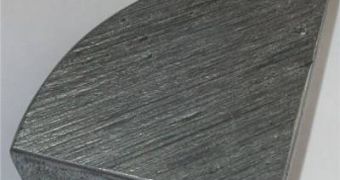Researchers at the University of California in Davis (UCD) have recently discovered a new type of material, just six-atoms thick, which exhibits two different sets of properties, depending on the spin of its electrons. That is, when the small particles move back and forth, their physical traits indicate something, whereas, during side-to-side motion, the traits completely shift to something else. This property was discovered in a computer model of a thin layer of vanadium dioxide, which had been virtually compressed between two insulating layers of titanium dioxide. One of the new areas of research that could benefit from the new find would be the field of spintronics technology, which focuses on the properties of electrons in designing new classes of electronic devices.
“Our model is demonstrating a new kind of band structure [dynamics of electrons], which no one has been aware of before. We think that some of the transport properties we're seeing in the material – electrical conduction and conduction in a magnetic field – will be different than anything seen before,” UCD Physics Department Chair and Professor Warren Pickett explained. The research team has already published a paper detailing the finds in the April 22nd issue of the scientific journal Physical Review Letters.
Five years after University of Manchester researchers found the graphene carbon compound, a single-layered material made from carbon atom lattices, the international physics community is still in turmoil. Hundreds of papers on the new material were published in just half a decade, and this happened mostly because graphene was one of the first newly discovered materials to have exquisite electron properties. The behavior of its electrons was termed “Dirac-like,” after the famous theoretical physicist Paul Dirac.
In their multi-layered vanadium dioxide lattice, Pickett and colleague Victor Pardo, a University of Santiago de Compostela professor, told that the electron properties were similar to a “semi-Dirac” motion, which is a term coined especially for their innovation. “It's important that we use precisely three layers of vanadium dioxide. Using one or two layers only produces a magnetic insulator, while anything more than three layers produces a fairly normal magnetic metal that exhibits conducting behavior. The semi-Dirac system is neither conducting nor insulating,” Pickett stated.
The expert concluded by saying that, “We're pretty confident that this nanostructure can be made, and made clean enough to demonstrate the properties the model has demonstrated.” He also mentioned the fact that, because the vanadium-based material was three-layers thick, it could also be worked on, as for instance with etching, as opposed to graphene, where the entire material was a single-atom thick.

 14 DAY TRIAL //
14 DAY TRIAL //